General Parts List
1. 130 amp or high output alternator
2. Mark VIII Relay Kit from Hollister Road http://www.hollisterroad.com/proddetail ... d=MarkVIII
You can custom order this kit to fit your needs and comes with everything you need to wire the fan (except fan plug) including all the connectors, fuses, relays and sensors. Really made installing the fan very simple.
3. Fan plug http://www.hollisterroad.com/proddetail ... I_Fan_Plug
4. TYC Electric fan part #620950 from rockauto. This is a two speed fan is for a 94 Ford TBird 4.6 V6. This fan moves more air than most if not all of the aftermarket fans at a fraction of the cost: http://www.rockauto.com/catalog/moreinfo.php?pk=1375559
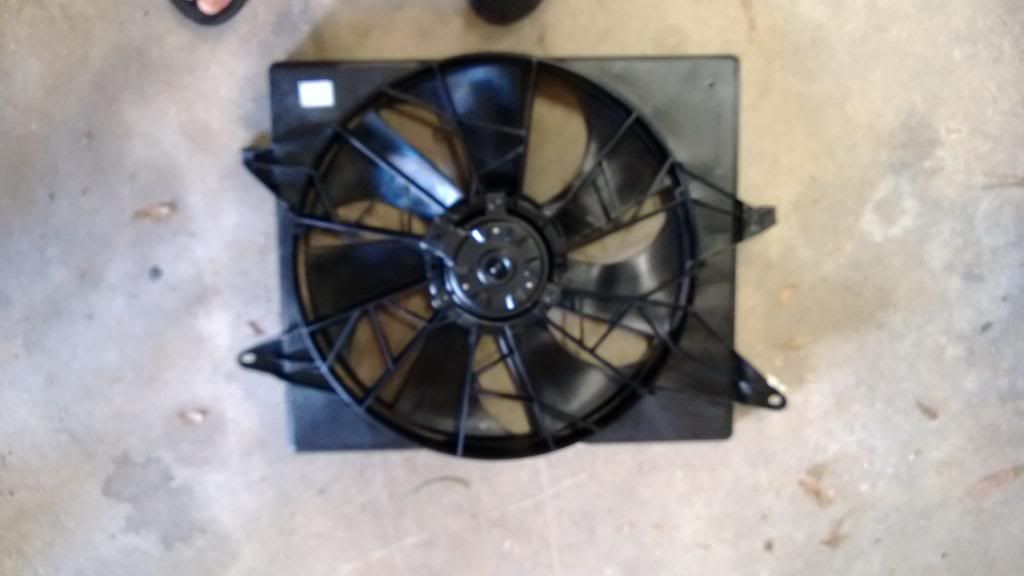
5. Fan Mounting kit from LMC part # 49-3893 I am sure a lot of you could make up your own brackets but this kit worked really well. I only used the L brackets in the kit. http://www.lmctruck.com/icatalog/fb/full.aspx?Page=43
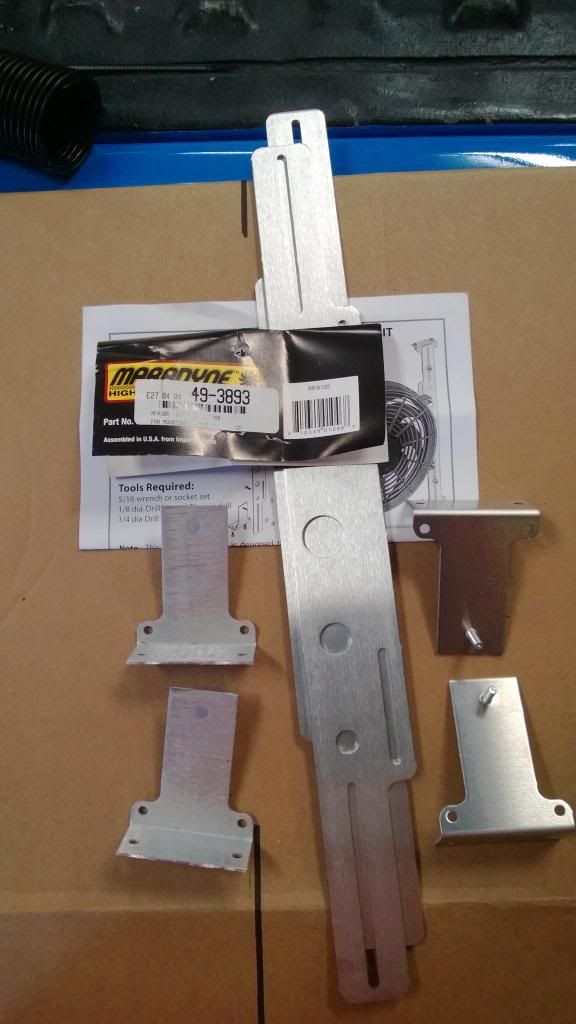
6. 4 5/16 -24 x 1” bolts for the water pump pulley
7. 8 ¼ x 1/2'-3/4' bolts, lock nuts and fender washers
8. 160 or 170 thermostat
Install Notes (everyone’s install might be a little different but this should cover some of the basics.)
1. You must have the 130 alternator converstion setup to install this electric fan or 100amp plus altenator to be able run everything correctly. You can read more about the conversion here: http://www.fordification.com/forum/view ... =8&t=13062
2. Remove Fan and Radiator shroud, and top radiator house. (would like to note that I had my radiator out for my install but will try to give instructions with the radiator still in the truck)
3. Install 160 or 170 thermostat. If you have a 180 or higher thermostat installed your electric fan will never shut off.
4. Install 5/16 -24 x 1 bolts into water pump pulley
5. Cut the OEM mounting tabs off of the side fan. I used a coping saw but sure you could use a hack saw. Just make sure not to cut into the shroud.
6. Drill out the holes in the L brackets from the kit to work with the ¼ bolts and also drill an extra hole in two of the brackets about ¾ inch down from one of the original holes. (see image below) Make sure to drill the hole in the same location on two of the brackets. This will be needed when mounting the fan because the outside holes for the top mounts will be too close to the corner of the fan if you use the same radiator holes I used. Take the 4 L brackets from the kit and mount them on the outside of your Radiator. There should be 4 larger holes in your radiator that you can use that are there from the factory (at least they where there for me). I used these because it gives you some extra movement to adjust the brackets. I used larger washers to keep the nuts from pulling through the larger holes. Only snug the brackets down tight enough to hold them but loose enough so you can adjust the brackets if needed. (This step would be much easier if your radiator is out but not a necessity)
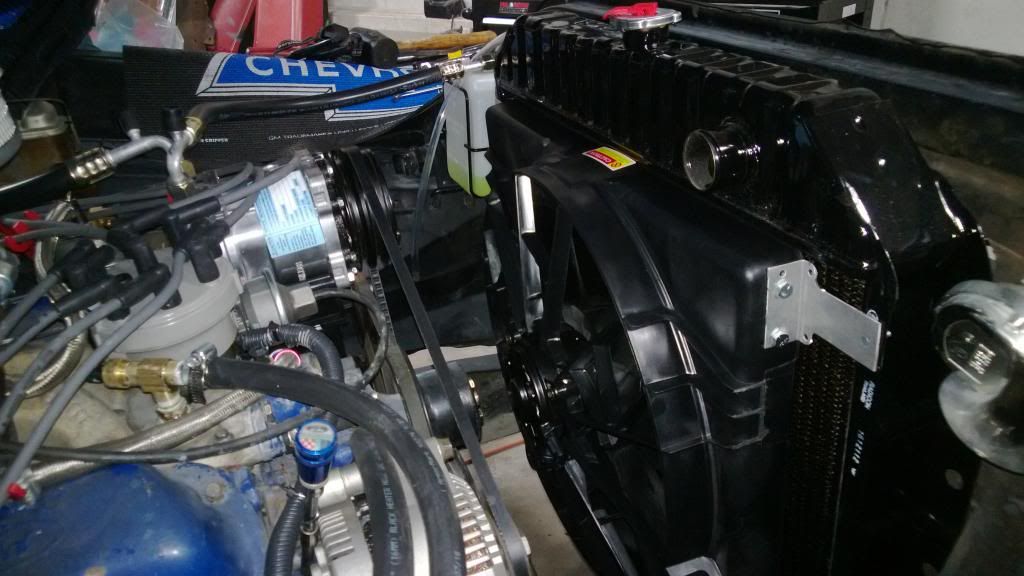
7. Place the fan on the radiator between the brackets. I pulled the fan all the way to the top edge of the radiator core. Have someone hold the fan so you can mark the holes that need to be drilled to mount the fan to the brackets. Pull the fan back out, drill the holes for the L Brackets in the fan shroud. Using the ¼ bolts, lock nuts and fender washers, mount the brackets to the fan. Now install the fan onto the radiator.
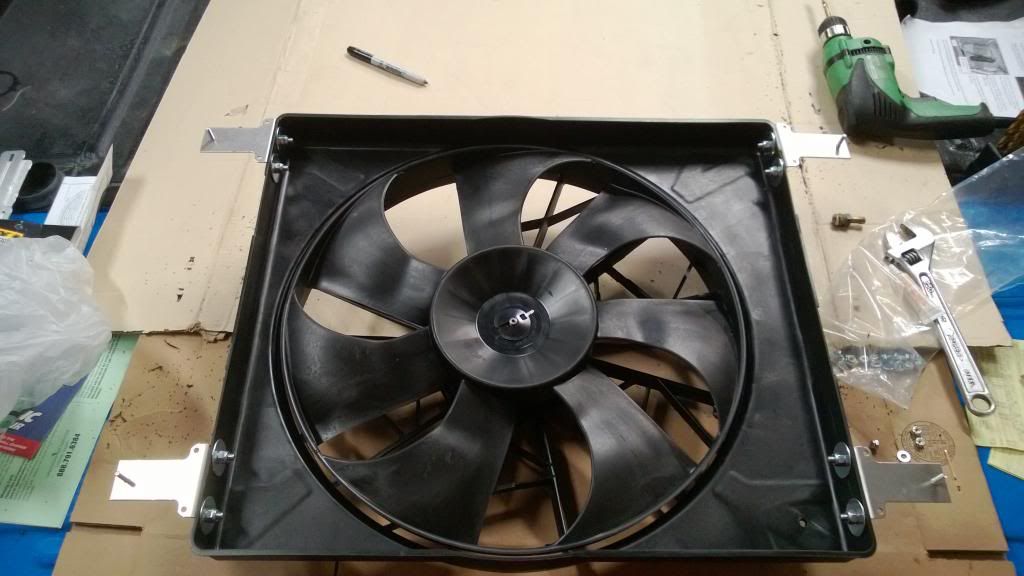
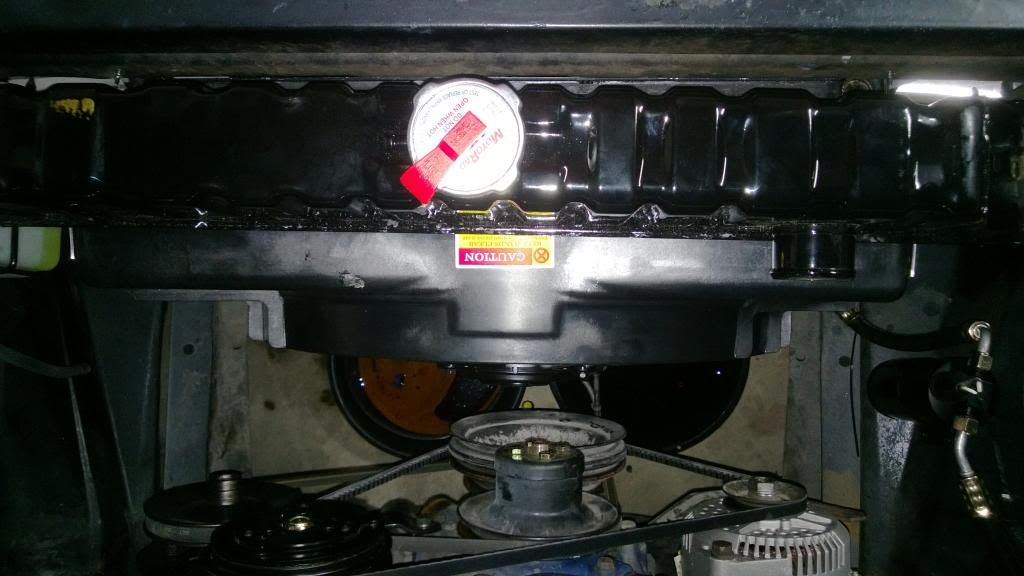
8. Time to wire the fan, I mounted the relays and main fuse just below the battery and the fuse for the ignition wire was mounted on the finder close to the starter solenoid. Relays need to be mounted within 18 inches of the battery and don’t mount them on the fan shroud. (If you order the relay kit it will have mounting and wiring instructions with the kit.)
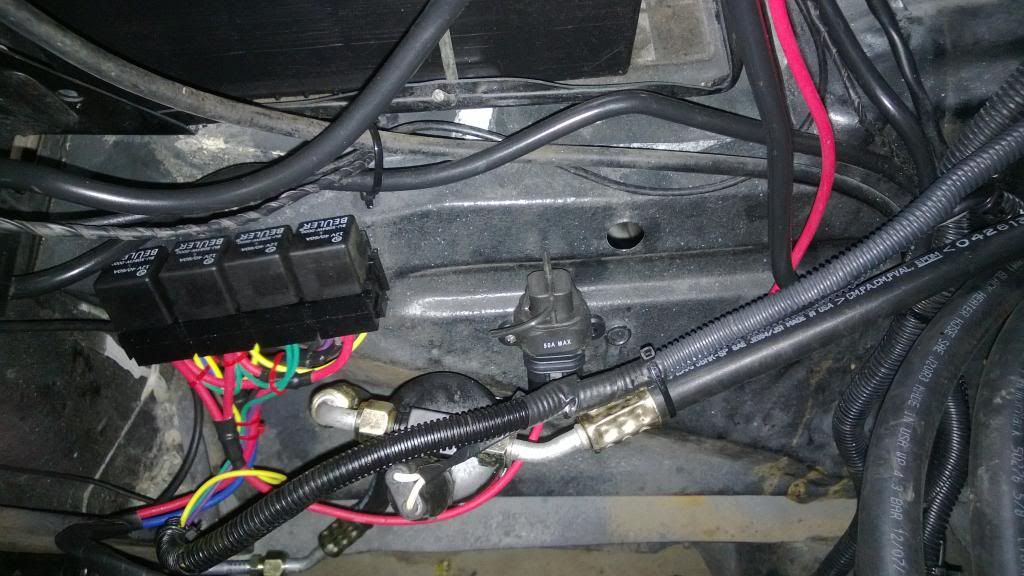
9. Follow the wiring instructions that are included with the relay kit and wire everything up.
10. Now install the sensors, I placed one sensor in the thermostat housing and the other in the manifold (I have an aftermarket intake). This left me with an issues as to where to put my temperature sending unit. I just went to Lowes and got a brass T and used one of the outlets on the intake that is also used for the heater hose and put the T in along with the header house outlet and the temperature sending unit. This seems to be working fine but I think I will change this out in the future using a radiator hose adapter from Hollister road. If you don’t have enough spots for the sending units take a look at the hose adapters here: http://www.hollisterroad.com/products.a ... e+Adaptors
Temp Sending Unit:
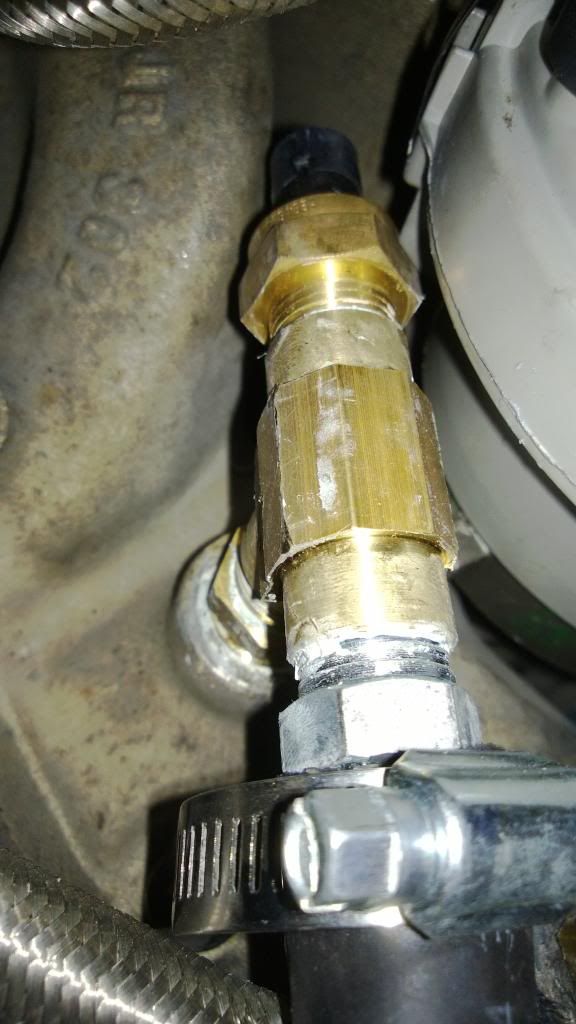
180 Temp Fan Sensor
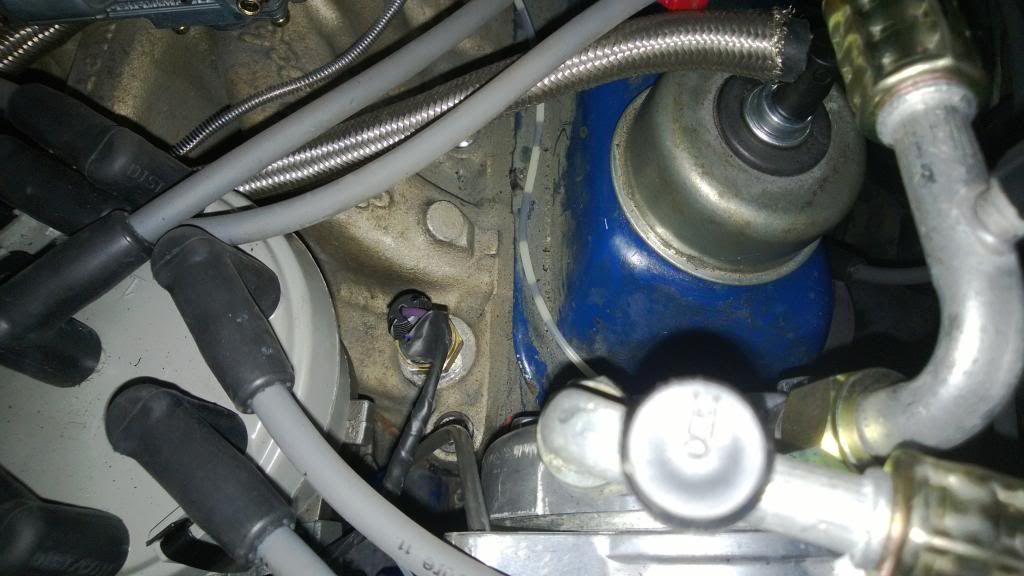
200 Temp Fan Sensor
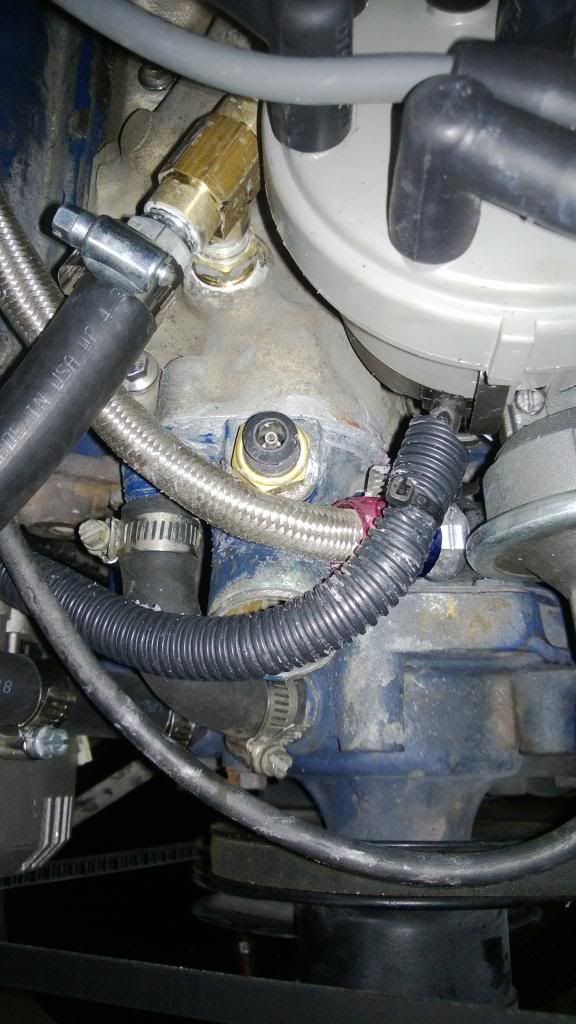
Put your remaining parts back on and start it up and make sure the fan comes on at the correct temps and check for leaks. I tested mine in my garage here in FL and it worked great. Only took the fan a few minutes to cool it down enough to shut the fan back off again while in the garage. The fan hasn't needed to hit the high speed yet because even the low speed moves a lot of air. So far the temp gauge hasn't gone above 190. I will post up more info the longer I run this setup. I will also update the thread if needed to add any additional information I might have forgotten. Please feel free to ask questions or add any input.
Would also like to thank Dave Chapman from hollister road. Gave me a lot of info on the fan setup.
I have gotten a lot of information from this site and I am very thankful so I figured I will try to give a little back.
Thanks!!



